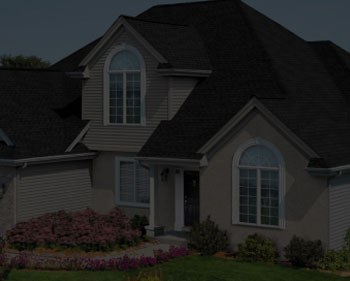
Modified bitumen is a two-part, low slope commercial roofing solution that is tear resistant, waterproof, energy efficient, flexible, and easy to repair and maintain.

Modified bitumen is a two-part, low slope roof system. It consists of asphalt combined with polymerized rubber or plastic reinforced with fiberglass to create a tough, but flexible waterproof membrane. Modified bitumen comes in membrane form in rolls that are installed directly onto the roofing substrate with an adhesive. The two-part system consists of a base layer and a cap layer. The base layer provides waterproofing and a surface for the cap to bond to. The modified bitumen’s base layer is composed of fiberglass, non-woven polyester, or a composite of fiberglass and non-woven polyester. The cap layer is composed of a bitumen covered membrane whose top surface is covered in granules, like an asphalt shingle, and is placed above the base.

Atactic Polypropylene, or APP, is a plastic based asphalt. This type of modified bitumen increases a roof’s ultraviolet resistance, improves its flexibility and flow resistance in both low and high temperatures. Usually, heat is applied to APP during the application to soften it and create an adhesive at the bottom. When it cools, the adhesive bond is waterproof, but is firmer and more brittle than styrene-butadiene-styrene.
Styrene-Butadiene-Styrene, or SBS, is a polymer modified bitumen that was created specifically for areas that experience low temperatures as asphalt frost cracking is a common problem. SBS, or rubber asphalt, resists deterioration and weathering, which makes it low maintenance. SBS tends to be more flexible and elastic than APP and melts into a paste.

There are three application methods for modified bitumen roofing. The first method for applying a modified bitumen roof is self-adhesive. In this method, each layer has an adhesive on the backside that is covered in plastic. The plastic is removed and as the layers are heated by the sun, they adhere and create a seal.
The next method for applying modified bitumen roofing is the heat adhesive, or welded method. Usually, a propane torch is used to melt the bitumen and seal it together. It is important to note that SBS and APP act differently when they are heated.
The final method for applying modified bitumen roofing is cold adhesive. In this method, a room temperature liquid bitumen is used for the sealing process, reducing the risk of fire and toxic fumes that can be released when the adhesive is heated.

Modified bitumen is available in a variety of style options. The granule colors available on the cap sheets can match any color of shingle. Moreover, modified bitumen is UV resistant, especially when lighter more reflective top coatings are used. Modified bitumen is also highly resistant to low temperatures, meaning it can remain flexible without cracking or breaking. Flexibility is important in low-slope roofing materials as it can expand and contract with shifts in temperature while retaining its shape. Modified bitumen is also tear resistant due to its fiberglass and/or polyester reinforcement layers. The price of modified bitumen varies depending on the installation method but is generally more affordable than other low-slope commercial roofing options. It is also relatively easy to repair and maintain as repairs can be done quickly and efficiently with bitumen patches. Another great advantage of modified bitumen is that it can be applied without heat. No matter which installation method is used, modified bitumen provides a good seal with no seams, making it highly resistant to leaks.

There are some considerations when choosing modified bitumen roofing for your flat or low-slope commercial roofing project. While modified bitumen is constructed to handle moderate foot traffic, areas that get heavy foot traffic are not good candidates for modified bitumen, especially if it is warmed by the sun. Modified bitumen is not as impact resistant as other commercial roofing materials and has a lower life expectancy. If you have a flat roof, it is important to have a proper drainage system or water will puddle and collect on the surface, causing the modified bitumen to wear faster than other commercial roofing materials such as TPO. At Orbit Roofing, we can provide a complete consultation and answer any of your questions about the best low slope roofing solution for your business.

Sufficiently large hail can puncture, tear, or bruise a modified bitumen membrane, reducing its weatherproofing capability. When hail impacts disrupt the membrane’s protective surfacing and expose the bitumen, the service life of the roof can be reduced. Following a hail event, Orbit Roofing will provide a thorough assessment of your roof’s performance, helping you to find the best roofing solution to keep your business running smoothly.





